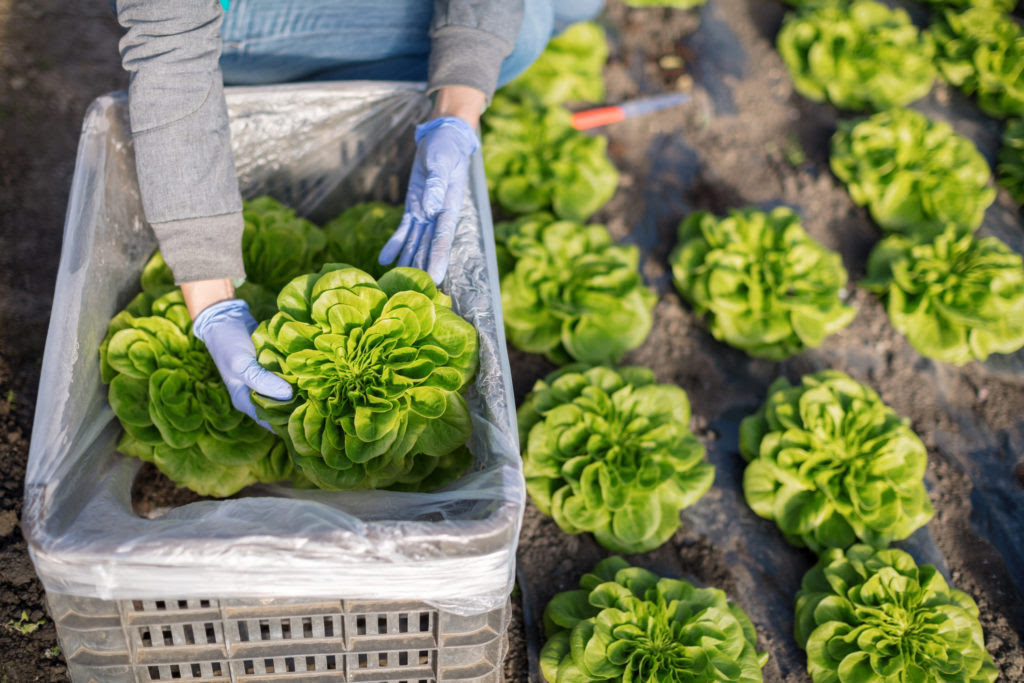Bones heal slower in people with diabetes, but researchers are working on an affordable therapy using plants that could aid healing. For now, experiments in mice show promise.

Researchers suggest delivering a protein drug via lettuce leaves could help heal bones faster.
People with diabetes are not only more at risk of breaking a bone, but they also take longer to heal than in the general population.
Researchers at the University of Pennsylvania in Philadelphia are paving the way for an oral therapy that could heal bones quicker in people with diabetes.
The Centers for Disease and Prevention (CDC) estimate that 30.3 million people in the United States — or 9.4% of the population — have diabetes. The CDC also write that 84.1 million people have prediabetes, which can develop into type 2 diabetes within 5 years if left untreated.
That makes for more than 100 million adults in the U.S. living with diabetes or prediabetes. According to the American Diabetes Association, the estimated economic cost of the disease to the U.S. was $327 billion in 2017.
Because people living with diabetes have a higher fracture risk and lower rates of bone repair, doctors find healing broken bones a significant challenge.
Currently, a person with diabetes and a fracture needs regular injections and hospital visits, which, researchers say, leads to low compliance.
But what if they could come up with an affordable, easy-to-take protein drug that stimulates the growth of bone-building cells and boosts bone regeneration?
Dr. Henry Daniell of Penn Dental Medicine — corresponding author on the paper published in the journal Biomaterials — says the team sought a solution that was affordable, comfortable, and possible to do at home.
The research builds on pioneering experimental work carried out by Daniell over decades to produce an affordable oral alternative to insulin treatment through plants.
“Over the past 50 years, injections of recombinant human insulin, made in yeast or bacteria, saved millions of lives, but these products are not affordable for more than 90% of the global diabetic population,” Daniell told Medical News Today.
Insulin is a protein hormone that the pancreas produces. It helps the body turn glucose into energy. Without it, as in diabetes, glucose can build-up, leading to serious health risks.
But current insulin treatments are costly. “Insulin pumps cost $6,000–12,000, while one-third of the global population earns less than $2 a day,” Daniell told MNT. In the U.S., the price of insulin has doubled in the past 5 years.
Insulin is costly to produce and highly unstable, requiring cold storage and transportation, as well as sterile injections. And needle-based delivery has been the only option for 50 years.
“So, the goal of oral protein drug delivery is to make them affordable and convenient,” said Daniell.
Growing protein treatment in lettuce
The research team’s work involves introducing specific proteins to plant cells. The plants then begin to express that gene in their cells. Once the plant produces the protein in its leaves, people can use it for oral therapy.
In this particular study, the team introduced human insulin-like growth factor-1 (IGF-1), a protein that plays an essential role in the development and regeneration of muscle and bone. It also included e-peptides to stimulate regeneration.
Using methods refined by Daniell, the team expressed IGF-1 and CTB (a protein that helps transport the fused proteins into the bloodstream from the digestive system) into lettuce leaves and removed the antibiotic resistance gene.
Once the lettuce had grown, the researchers freeze-dried the plants and powdered the leaves to create a drug with a shelf stability of 3 years.
Treatment boosts bone growth in mice
The treatment caused the growth of several cell types, including those needed to build bones — oral-tissue cells and osteoblasts — in mouse and human cells.
When the researchers fed the drug to mice, the rodents showed an increase in IGF-1. When mice with diabetes consumed the drug, they showed signs of boosted healing with improved bone volume, density, and area.
“It’s amazing how one protein impacted fracture healing,” says Daniell.
He continues, “Here we gave an oral drug once a day and saw healing to be greatly accelerated.”
“Delivering this novel human IGF-1 through eating lettuce is effective, easily delivered, and an attractive option for patients. The study provides a new and ideal therapeutic option for diabetic fracture and other musculoskeletal diseases.”
– Dr. Henry Daniell
Dr. Daniell told MNT that they used lettuce leaves because they are very thin, easy to dry, and safe, with no known reported allergies.
Once the leaves are freeze-dried, the protein remains stable for years with no need for cold storage and transportation.
Current clinical IGF-1 treatment requires daily injections or surgical implantation, lacks e-peptide, and is glycosylated, which reduces efficiency.
“We’re hoping to find partners to advance this work as there are a lot of people with diabetes who could benefit from a therapy like this,” Daniell says.
Researchers hope to continue developing IGF-1 in plants for clinical use not only with bone fracture healing but issues such as osteoporosis and bone regeneration after cancer.

Leave a Reply